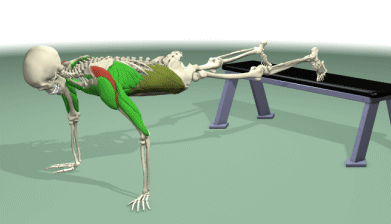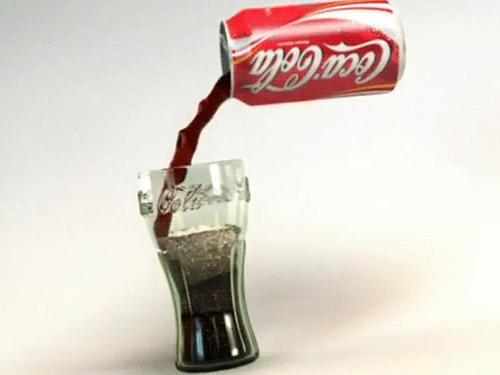




THE FITNESS
DIGEST.
How To Take Care Of Your Teeth
When you get your picture taken, everyone says, "Say cheese! Smile!" So you do — you open your mouth and show your teeth. When you see the picture, you see a happy person looking back at you. The healthier those teeth are, the happier you look. Why is that?
It's because your teeth are important in many ways. If you take care of them, they'll help take care of you. Strong, healthy teeth help you chew the right foods to help you grow. They help you speak clearly. And yes, they help you look your best.
Why Healthy Teeth Are Important
How does taking care of your teeth help with all those things? Taking care of your teeth helps prevent plaque which is a clear film of bacteria that sticks to your teeth.
After you eat, bacteria go crazy over the sugar on your teeth, like ants at a picnic. The bacteria break it down into acids that eat away tooth enamel, causing holes called cavities. Plaque also causes gingivitis which is gum disease that can make your gums red, swollen, and sore. Your gums are those soft pink tissues in your mouth that hold your teeth in place.
If you don't take care of your teeth, cavities and unhealthy gums will make your mouth very, very sore. Eating meals will be difficult. And you won't feel like smiling so much.
Before Toothpaste Was Invented.
We're lucky that we know so much now about taking care of our teeth. Long ago, as people got older, their teeth would rot away and be very painful. To get rid of a toothache, they had their teeth pulled out. Finally, people learned that cleaning their teeth was important, but they didn't have toothpaste right away.
While you're swishing that minty-fresh paste around your mouth, think about what people used long ago to clean teeth:
-
ground-up chalk or charcoal
-
lemon juice
-
ashes (you know, the stuff that's left over after a fire)
-
tobacco and honey mixed together
-
It was only about 100 years ago that someone finally created a minty cream to clean teeth. Not long after that, the toothpaste tube was invented, so people could squeeze the paste right onto the toothbrush! Tooth brushing became popular during World War II. The U.S. Army gave brushes and toothpaste to all soldiers, and they learned to brush twice a day.
-
Back then, toothpaste tubes were made of metal; today they're made of soft plastic and are much easier to squeeze!
Today there are plenty of toothpaste choices: lots of colors and flavors to choose from, and some are made just for kids. People with great-looking teeth advertise toothpaste on TV commercials and in magazines. When you're choosing a toothpaste, make sure it contains fluoride. Fluoride makes your teeth strong and protects them from cavities.
When you brush, you don't need a lot of toothpaste: just squeeze out a bit the size of a pea. It's not a good idea to swallow the toothpaste, either, so be sure to spit after brushing.
Kids can take charge of their teeth by taking these steps:
-
Brush at least twice a day — after breakfast and before bedtime. If you can, brush after lunch or after sweet snacks. Brushing properly breaks down plaque.
-
Brush all of your teeth, not just the front ones. Spend some time on the teeth along the sides and in the back. Have your dentist show you the best way to brush to get your teeth clean without damaging your gums.
-
Take your time while brushing. Spend at least 2 or 3 minutes each time you brush. If you have trouble keeping track of the time, use a timer or play a recording of a song you like to help pass the time.
-
Be sure your toothbrush has soft bristles (the package will tell you if they're soft). Ask your parent to help you get a new toothbrush every 3 months. Some toothbrushes come with bristles that change color when it's time to change them.
-
Ask your dentist if an antibacterial mouth rinse is right for you.
-
Learn how to floss your teeth, which is a very important way to keep them healthy. It feels weird the first few times you do it, but pretty soon you'll be a pro. Slip the dental floss between each tooth and along the gum line gently once a day. The floss gets rid of food that's hidden where your toothbrush can't get it, no matter how well you brush.
-
You can also brush your tongue to help keep your breath fresh!
It's also important to visit the dentist twice a year. Besides checking for signs of cavities or gum disease, the dentist will help keep your teeth extra clean and can help you learn the best way to brush and floss.
It's not just brushing and flossing that keep your teeth healthy — you also need to be careful about what you eat and drink. Remember, the plaque on your teeth is just waiting for that sugar to arrive. Eat lots of fruits and vegetables and drink water instead of soda. And don't forget to smile!

Physical fitness Disclaimer and Waiver of liability:
Exercises are not without their risks and the exercise programs in this website may result in injuries.Any person who undertakes these exercises does so at their own risk.To reduce the risk of injuries ,you should consult your doctor before beginning these or any other exercise programs.As with any exercise program ,if at any point during your workout you believe conditions to be unsafe or begin to feel faint or dizzy,have physical discomfort or pain, you should stop immediately and consult a physician.
Daily exercise for Working women.
Jumping Jacks. . Effective workouts.
Group exercise and its benefits.
Calf raises-free style . Push ups.
Tummy exercises. Hoola Hooping .
Fitness Motivational tips. Barbell Squauts.
The myths of spot reduction. Leg press.
Standing calf raises. Concentration curls.
Bench (Tricep) dips.. One arm dumbbell rows.
Pec deck Flye. Fr0nt dumbbell raises. Glute ham raise.
Seated leg curl . Close grip bench press .
.

Please keep comments positive and constructive.
Help the WEBSITE by reporting inappropriate comments to thefitnessdigest@gmail.com . Inappropriate comments may be reported and/or removed.